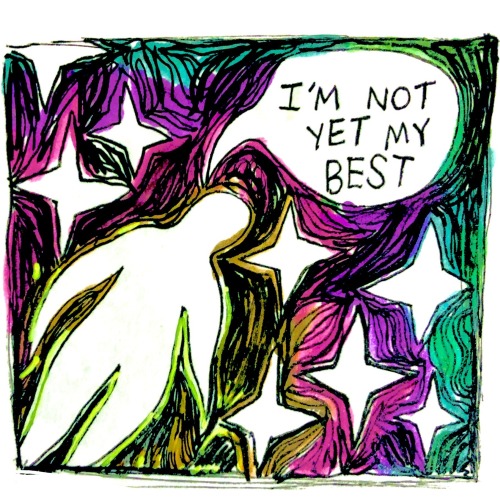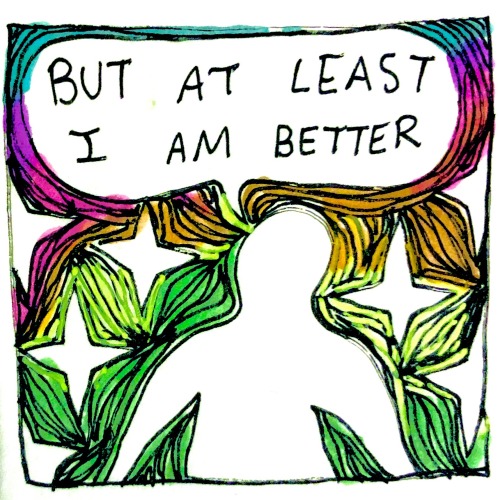What The Hell Are Comets, Meteroids, And Asteroids?
What the hell are Comets, Meteroids, and Asteroids?
SEE BELOW TO FIND OUT
COMET

Made of ice, rock and dust.
They originate outside our solar system
HUGE. like miles wide. Big boys.
They orbit the sun.
They have that tail thingy.
METEOROID

Small. Like could be a grain of sand
Rocky or metal
They originate from comets or asteroids aka they are the bits that fall off
They orbit the sun
Can fall to earth but then they are called a meteor (if they vaporize in the atmosphere) or a meteorite (if they hit earth)
ASTEROID

Also made of rock or metal
Are larger than a meteoroid and historically if an object is larger than 10 meters across, they are called an asteroid
Also orbit the sun because the sun is so damn popular but they are generally between Mars and Jupiter
More Posts from Nyxs-knight and Others
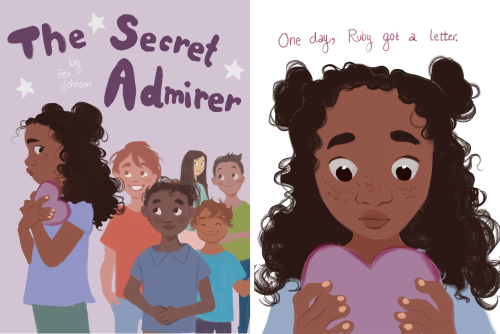
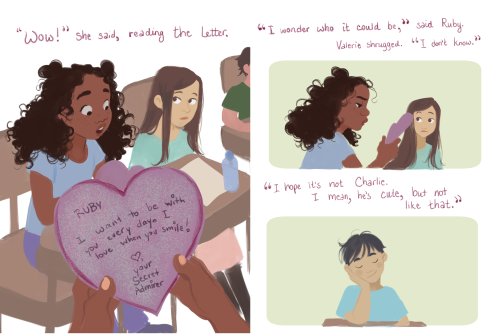
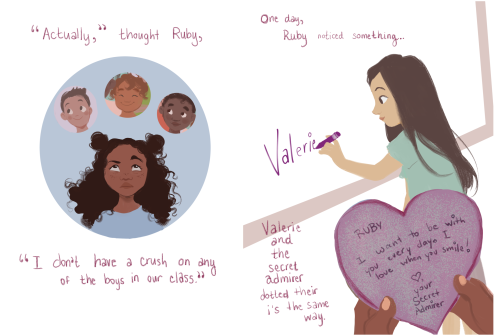
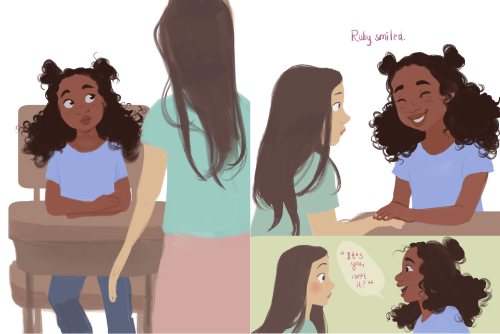
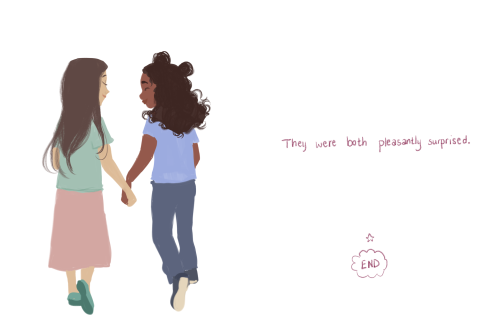
made a tiny picture book for class. i wanted to challenge the idea that girls loving other girls is somehow adult/inappropriate



Set goals and chase them down. Love and challenge your body. Be relentless and gentle. Stay Determined!!
Celebrating Women’s History Month: Most Recent Female Astronauts
For Women’s History Month, NASA and the International Space Station celebrate the women who conduct science aboard the orbiting lab. As of March 2019, 63 women have flown in space, including cosmonauts, astronauts, payload specialists, and space station participants. The first woman in space was Russian cosmonaut Valentina Tereshkova who flew on Vostok 6 on June 16, 1963. The first American woman in space, Sally Ride, flew aboard the Space Shuttle STS-7 in June of 1983.
If conducted as planned, the upcoming March 29 spacewalk with Anne McClain and Christina Koch would be the first all-female spacewalk. Women have participated in science on the space station since 2001; here are the most recent and some highlights from their scientific work:
Christina Koch, Expedition 59

Christina Koch (pictured on the right) becomes the most recent woman in space, launching to the space station in mid-March to take part in some 250 research investigations and technology demonstrations. Koch served as station chief of the American Samoa Observatory and has contributed to the development of instruments used to study radiation particles for the Juno mission and the Van Allen Probe.
Anne McClain, Expedition 57/58, 59

Flight Engineer Anne McClain collects samples for Marrow, a long-term investigation into the negative effects of microgravity on the bone marrow and blood cells it produces. The investigation may lead to development of strategies to help prevent these effects in future space explorers, as well as people on Earth who experience prolonged bed rest. McClain holds the rank of Lieutenant Colonel as an Army Aviator, with more than 2,000 flight hours in 20 different aircraft.
Serena M. Auñón-Chancellor, Expedition 56/57

Serena Auñón-Chancellor conducts research operations for the AngieX Cancer Therapy inside the Microgravity Science Glovebox (MSG). This research may facilitate a cost-effective drug testing method and help develop safer and more effective vascular-targeted treatments. As a NASA Flight Surgeon, Auñón-Chancellor spent more than nine months in Russia supporting medical operations for International Space Station crew members.
Peggy Whitson, Expeditions 5, 16, 50, 51/52

Astronaut Peggy Whitson holds numerous spaceflight records, including the U.S. record for cumulative time in space – 665 days – and the longest time for a woman in space during a single mission, 289 days. She has tied the record for the most spacewalks for any U.S. astronaut and holds the record for the most spacewalk time for female space travelers. She also served as the first science officer aboard the space station and the first woman to be station commander on two different missions. During her time on Earth, she also is the only woman to serve as chief of the astronaut office. Here she works on the Genes in Space-3 experiment, which completed the first-ever sample-to-sequence process entirely aboard the International Space Station. This innovation makes it possible to identify microbes in real time without having to send samples back to Earth, a revolutionary step for microbiology and space exploration.
Kate Rubins, Expedition 48/49

The Heart Cells investigation studies the human heart, specifically how heart muscle tissue contracts, grows and changes its gene expression in microgravity and how those changes vary between subjects. In this image, NASA astronaut Kate Rubins conducts experiment operations in the U.S. National Laboratory. Rubins also successfully sequenced DNA in microgravity for the first time as part of the Biomolecule Sequencer experiment.
Samantha Cristoforetti, Expedition 42/43

The first Italian woman in space, European Space Agency (ESA) astronaut Samantha Cristoforetti conducts the SPHERES-Vertigo investigation in the Japanese Experiment Module (JEM). The investigation uses free-flying satellites to demonstrate and test technologies for visual inspection and navigation in a complex environment.
Elena Serova, Expedition 41/42

Cosmonaut Elena Serova, the first Russian woman to visit the space station, works with the bioscience experiment ASEPTIC in the Russian Glavboks (Glovebox). The investigation assessed the reliability and efficiency of methods and equipment for assuring aseptic or sterile conditions for biological investigations performed on the space station.
Karen Nyberg, Expedition 36/37

NASA astronaut Karen Nyberg sets up the Multi-Purpose Small Payload Rack (MSPR) fluorescence microscope in the space station’s Kibo laboratory. The MSPR has two workspaces and a table used for a wide variety of microgravity science investigations and educational activities.
Sunita Williams, Expeditions 32/33, 14/15

This spacewalk by NASA astronaut Sunita Williams and Japan Aerospace Exploration Agency (JAXA) astronaut Aki Hoshide, reflected in Williams’ helmet visor, lasted six hours and 28 minutes. They completed installation of a main bus switching unit (MBSU) and installed a camera on the International Space Station’s robotic Canadarm2. Williams participated in seven spacewalks and was the second woman ever to be commander of the space station. She also is the only person ever to have run a marathon while in space. She flew in both the space shuttle and Soyuz, and her next assignment is to fly a new spacecraft: the Boeing CST-100 Starliner during its first operational mission for NASA’s Commercial Crew Program.
Cady Coleman, Expeditions 26/27

Working on the Capillary Flow Experiment (CFE), NASA astronaut Catherine (Cady) Coleman performs a Corner Flow 2 (ICF-2) test. CFE observes the flow of fluid in microgravity, in particular capillary or wicking behavior. As a participant in physiological and equipment studies for the Armstrong Aeromedical Laboratory, she set several endurance and tolerance records. Coleman logged more than 4,330 total hours in space aboard the Space Shuttle Columbia and the space station.
Tracy Caldwell Dyson, Expedition 24

A system to purify water for use in intravenous administration of saline would make it possible to better treat ill or injured crew members on future long-duration space missions. The IVGEN investigation demonstrates hardware to provide that capability. Tracy Caldwell Dyson sets up the experiment hardware in the station’s Microgravity Science Glovebox (MSG). As noted above, she and Shannon Walker were part of the first space station crew with more than one woman.
Shannon Walker, Expedition 24/25

Astronaut Shannon Walker flew on Expedition 24/25, a long-duration mission that lasted 163 days. Here she works at the Cell Biology Experiment Facility (CBEF), an incubator with an artificial gravity generator used in various life science experiments, such as cultivating cells and plants on the space station. She began working in the space station program in the area of robotics integration, worked on avionics integration and on-orbit integrated problem-solving for the space station in Russia, and served as deputy and then acting manager of the On-Orbit Engineering Office at NASA prior to selection as an astronaut candidate.
Stephanie Wilson, STS-120, STS-121, STS-131

Astronaut Stephanie Wilson unpacks a Microgravity Experiment Research Locker Incubator II (MERLIN) in the Japanese Experiment Module (JEM). Part of the Cold Stowage Fleet of hardware, MERLIN provides a thermally controlled environment for scientific experiments and cold stowage for transporting samples to and from the space station. Currently serving as branch chief for crew mission support in the Astronaut Office, Wilson logged more than 42 days in space on three missions on the space shuttle, part of the Space Transportation System (STS).
Other notable firsts:
• Roscosmos cosmonaut Svetlana Savitskaya, the first woman to participate in an extra-vehicular activity (EVA), or spacewalk, on July 25, 1984
• NASA astronaut Susan Helms, the first female crew member aboard the space station, a member of Expedition 2 from March to August 2001
• NASA astronaut Peggy Whitson, the first female ISS Commander, April 2008, during a six-month tour of duty on Expedition 16
• The most women in space at one time (four) happened in 2010, when space shuttle Discovery visited the space station for the STS-131 mission. Discovery’s crew of seven included NASA astronauts Dorothy Metcalf-Lindenburger and Stephanie Wilson and Japan Aerospace Exploration Agency (JAXA) astronaut Naoko Yamazaki. The space station crew of six included NASA astronaut Tracy Caldwell Dyson.
• Susan Helms shares the record for longest single spacewalk, totaling 8 hours 56 minutes with fellow NASA astronaut Jim Voss.
• Expedition 24 marked the first with two women, NASA astronauts Shannon Walker and Tracy Caldwell Dyson, assigned to a space station mission from April to September, 2010
• The 2013 astronaut class is the first with equal numbers of women and men.
• NASA astronaut Anne McClain became the first woman to live aboard the space station as part of two different crews with other women: Serena Auñón-Chancellor in December 2018 and currently in orbit with Christina Koch.
Make sure to follow us on Tumblr for your regular dose of space: http://nasa.tumblr.com
"Why do you want to look like a man?"
I wear clothing from the men’s section of the clothing store. My leg hairs are longer than most of the hair in my head. I never wear any makeup, no matter if I’m going out to buy bread in the morning or if I’m going to a party. People often call me “sir”. Others hurl slurs at me, sometimes calling me a “dyke”, sometimes calling me a “faggot”, both showing their disapproval of my physical presentation. I see little kids asking their mothers, in whispers, if I am a boy or a girl. And people ask me all the time, why do I want to look like a man?
The answer is simple. I don’t.
And I do not look like a man.
I look like a woman who refuses to perform femininity.
My unshaven legs do not make me like a man, they’re MY legs, and MY hair, and I am a woman. My “boy’s” clothes are worn on my body, the body of a woman. My naked, unpainted face is the face of a woman. I am a woman, and this is not defined by a haircut or a choice of attire, or by lipstick or high heels, or boxer briefs and men’s deodorant worn over fuzzy unshaven armpits. There’s nothing manly about me.
I am a woman, not by choice, but by fact. Because “woman” is a reality imposed to me, from the day I was born and given a woman’s name, to the day I was six and I was told I couldn’t take off my shirt in a blazing hot summer day because one day I would have breasts, to last night when I walked home in a state of hyper-awareness, my house keys tightly clutched between my fingers, tracking the movements of every man in the dark streets. I am a woman because, since before my own birth, when an ultrasonography picture informed my parents that I would be born with a vulva, I have been groomed to be a member of the woman class, the breeding stock class, the sex class, the lower class. I was taught to be accomodating and speak softly, to not bring attention to myself and to spare men’s feelings. I was taught that the boy who pulled my hair and threw his toy train at me, aiming for my head, probably did it because he liked me, and boys will be boys anyway. I learned that, if I did the same to him, I was a troublemaker. That my assertiveness is unladylike. That one day I would bear some man’s children, and this was pretty much destiny. That my worth was in my looks, more than in my brain. I am a woman because I was taught all these things, and I am a woman because people expect me to know these lessons by heart, and follow every one of them. When people ask me why do I want to look like a man, what they’re actually asking is why am I not marking myself as a woman. They’re asking why do I fail to perform the role of femininity, to make myself pleasing and unthreatening to the eyes of the upper class, the man class. My mother once voiced her concerns to me, that my looks would make me a target for male violence, and she is right to be concerned. I am perceived as a member of the lower class who refuses to bear the marks and play the role imposed to me. I refuse to shave my legs to look like a pre-pubescent girl, innocent and vulnerable, or to wear shoes that force me to walk on the tips of my toes, slow and precariously balanced, and this makes men angry, because this is a counscious act of rebellion. This is me saying I am not theirs. I will not please them. I do not desire their approval or their attention. And men often get violent when we refuse to cater to them. My choices of visual presentation make me a cautionary tale. I am the hairy, ugly, lesbian feminist, the one they warn other women about. “Don’t be like her”, they say, “or no man will ever want you”. But I don’t want them either, and I do not want to look like them, or be like them, or have anything to do with them. I want to be free from men and their bullshit standards. I want to strut around proudly, shamelessly unladylike, looking like a woman looks when she’s not covered in face paint and restrictive clothing, when she doesn’t care about pleasing men. I do not look like a man, and nothing will ever make me look like one. I am pure, unadulterated woman. I choose myself over them, I choose women over them. If that makes them hate me, so be it. Because I am a woman, they would hate me no matter what I did.
my fave thing about being alive is that there is nothing that cannot be learned. tapestry weaving, astrophysics, swimming. music, theremin, singing. cutting your own hair, dancing, quantum mathematics. sewing, philosophy, social skills. knowledge is divine, but sharing it is human !!!
Enough of the thin, conventionally attractive sex goddesses. Enough. Stop reducing multifaceted goddesses to sex alone. Stop reducing them to beauty. To homemaking. To some appeal to the pathetic, predatory tastes of men.
I want to see sex goddesses who are powerful and brawny, strong of arm and broad of shoulder. I want to see goddesses of beauty who are round like the moon, goddesses of beauty with short hair and a square jaw and scars. If she is a goddess of war, why do you depict her as frail and thin, unable to defend herself? She may have power beyond the physical, but why do you assume she would stoop so low as to allow herself to wither away to the skeletal thinness men find so attractive? (Hint: it's only attractive to them because it makes her helpless, easier to control.) Why do you dress her in lace and lingerie? If she is a goddess of beauty, of desire, she has no need to strip herself of her clothing to draw the eye. Put clothes on her, treat her with respect, don't degrade her to some sex object for the male gaze. Why put her in heels? Why cake her glorious countenance in filthy makeup? She has no need of such contraptions, and neither do you.
I want to see goddesses that do not appeal to the eyes of men, goddesses who do not bow to their whims and desires, goddesses who are strong like an oak and tall and powerful, goddesses who are dressed practically.
If you choose only to depict these goddesses as weak and delicate things, you choose to invite her wrath, for you are denigrating her.
Women In History
I grew up believing that women had contributed nothing to the world until the 1960′s. So once I became a feminist I started collecting information on women in history, and here’s my collection so far, in no particular order.

Lepa Svetozara Radić (1925–1943) was a partisan executed at the age of 17 for shooting at German soldiers during WW2. As her captors tied the noose around her neck, they offered her a way out of the gallows by revealing her comrades and leaders identities. She responded that she was not a traitor to her people and they would reveal themselves when they avenged her death. She was the youngest winner of the Order of the People’s Hero of Yugoslavia, awarded in 1951
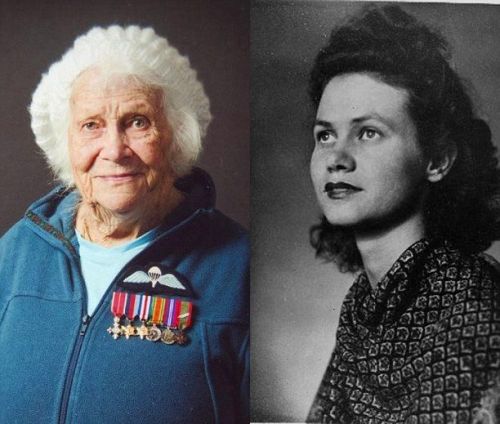
23 year old Phyllis Latour Doyle was British spy who parachuted into occupied Normandy in 1944 on a reconnaissance mission in preparation for D-day. She relayed 135 secret messages before France was finally liberated.
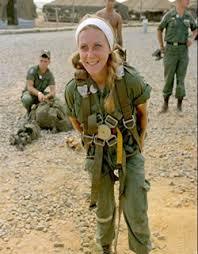
Catherine Leroy, War Photographer starting with the Vietnam war. She was taken a prisoner of war. When released she continued to be a war photographer until her death in 2006.

Lieutenant Pavlichenko was a Ukrainian sniper in WWII, with a total of 309 kills, including 36 enemy snipers. After being wounded, she toured the US to promote friendship between the two countries, and was called ‘fat’ by one of her interviewers, which she found rather amusing.
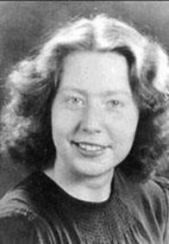
Johanna Hannie “Jannetje” Schaft was born in Haarlem. She studied in Amsterdam had many Jewish friends. During WWII she aided many people who were hiding from the Germans and began working in resistance movements. She helped to assassinate two nazis. She was later captured and executed. Her last words were “I shoot better than you.”.
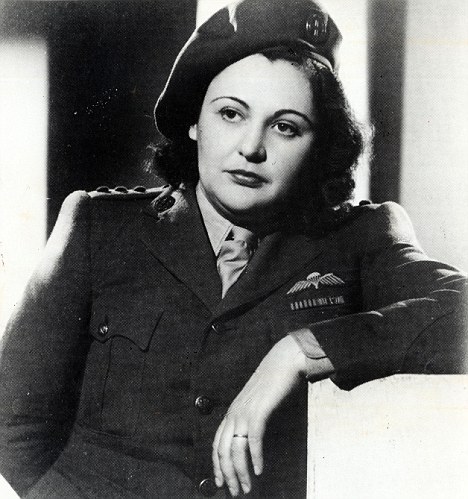
Nancy wake was a resistance spy in WWII, and was so hated by the Germans that at one point she was their most wanted person with a price of 5 million francs on her head. During one of her missions, while parachuting into occupied France, her parachute became tangled in a tree. A french agent commented that he wished that all trees would bear such beautiful fruit, to which she replied “Don’t give me any of that French shit!”, and later that evening she killed a German sentry with her bare hands.
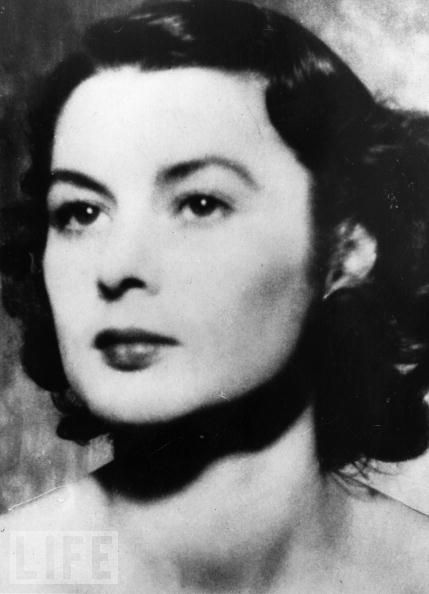
After her husband was killed in WWII, Violette Szabo began working for the resistance. In her work, she helped to sabotage a railroad and passed along secret information. She was captured and executed at a concentration camp at age 23.

Grace Hopper was a computer scientist who invented the first ever compiler. Her invention makes every single computer program you use possible.

Mona Louise Parsons was a member of an informal resistance group in the Netherlands during WWII. After her resistance network was infiltrated, she was captured and was the first Canadian woman to be imprisoned by the Nazis. She was originally sentenced to death by firing squad, but the sentence was lowered to hard lard labor in a prison camp. She escaped.
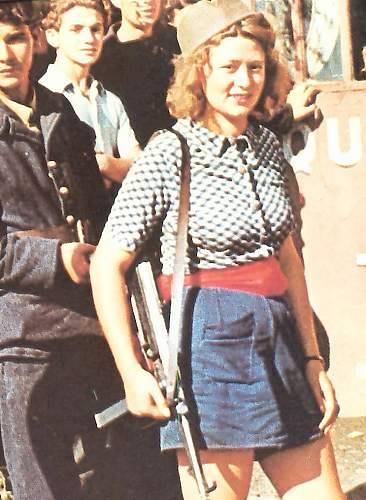
Simone Segouin was a Parisian rebel who killed an unknown number of Germans and captured 25 with the aid of her submachine gun. She was present at the liberation of Paris and was later awarded the ‘croix de guerre’.
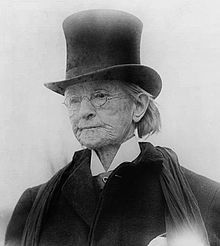
Mary Edwards Walker is the only woman to have ever won an American Medal of Honor. She earned it for her work as a surgeon during the Civil War. It was revoked in 1917, but she wore it until hear death two years later. It was restored posthumously.
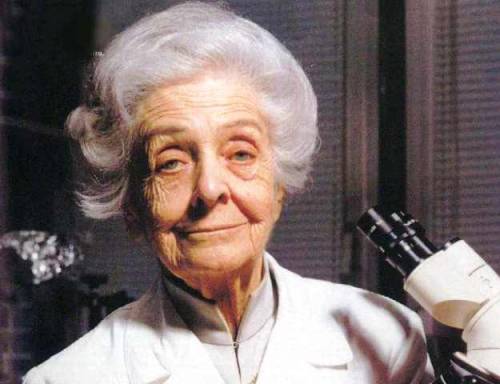
Italian neuroscientist won a Nobel Prize for her discovery of nerve growth factor. She died aged 103.
EDIT
jinxedinks added: Her name was Rita Levi-Montalcini. She was jewish, and so from 1938 until the end of the fascist regime in Italy she was forbidden from working at university. She set up a makeshift lab in her bedroom and continued with her research throughout the war.
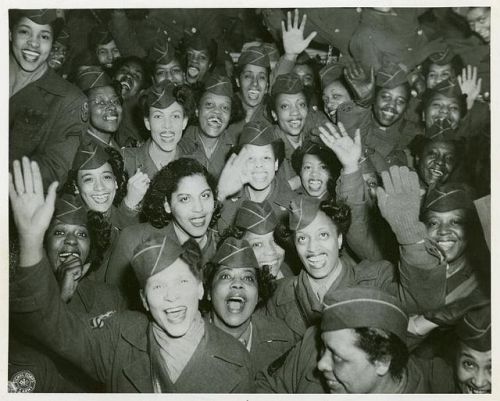
A snapshot of the women of color in the woman’s army corps on Staten Island
This is an ongoing project of mine, and I’ll update this as much as I can (It’s not all WWII stuff, I’ve got separate folders for separate achievements).
File this under: The History I Wish I’d Been Taught As A Little Girl
Let me describe to you what kind of world gender abolitionists actually dream about: When a child would be born it’s biological sex, being an actual physical reality, would be noticed but not a single assumption regarding the child’s personality would be made based on it. Growing up, children would be free to chose what toys and clothes they prefer. If they want to play with toy trucks or dolls, it would be fine either way. If they want to dress comfortably or in frilly colorful dresses, it would be fine. Certain personality traits would not be encouraged in members of one sex and discouraged in the other. Females would be free to be strong, brave and assertive and males would not be shamed for being shy and soft spoken. No female child would be called a tomboy and no male child would be called a sissy. No kid would ever be bullied for what we in our gendered world call “gender expression”. When children would reach puberty they would still be free to dress how they want. Females would not be pressured to wear clothes that reveal their bodies and males would not be shamed if they chose to. Everybody would have a free choice of accessories, which would not be categorized as “men’s” or “women’s” but people could should whichever they liked. Or chose to not wear accessories at all if that’s what they are more comfortable with. Females would not be pressured to keep their bodies slim, soft and hairless. Males would not be pressured to be athletic and muscular. Expectations of femininity and masculinity upon the body would not exist and affect negatively people’s relationship with their own body. Everyone could choose a career without fearing stigmatization within that particular field because of their biological sex. The most important thing would be competence and not what someone has between their legs. Domestic work would not be considered “women’s work” and would be shared equally between the sexes. Biological sex would only be thought about when relevant. And everyone would be free to be themselves without ever having to worry about gender expectations. Nobody would feel the need to repress certain parts of their personality and exaggerate others in order to fit into some gender role that is being forced on them. Gender abolitionism is not about restricting people’s choices but about giving them greater freedom. - http://burningax.wordpress.com/2014/10/06/a-gender-free-world-boring/
-
 rainwrapped liked this · 3 years ago
rainwrapped liked this · 3 years ago -
 delightful-potato liked this · 3 years ago
delightful-potato liked this · 3 years ago -
 nyxkky reblogged this · 3 years ago
nyxkky reblogged this · 3 years ago -
 nyxkky liked this · 3 years ago
nyxkky liked this · 3 years ago -
 cephiius liked this · 3 years ago
cephiius liked this · 3 years ago -
 merida01 liked this · 3 years ago
merida01 liked this · 3 years ago -
 evenofday liked this · 3 years ago
evenofday liked this · 3 years ago -
 pleasantartisanhottea liked this · 3 years ago
pleasantartisanhottea liked this · 3 years ago -
 aro-aizawa reblogged this · 3 years ago
aro-aizawa reblogged this · 3 years ago -
 sunnybergamota liked this · 3 years ago
sunnybergamota liked this · 3 years ago -
 the-goose-ferret reblogged this · 3 years ago
the-goose-ferret reblogged this · 3 years ago -
 zmorowanie liked this · 3 years ago
zmorowanie liked this · 3 years ago -
 happymonie liked this · 4 years ago
happymonie liked this · 4 years ago -
 that-one-fangirl-in-the-corner liked this · 4 years ago
that-one-fangirl-in-the-corner liked this · 4 years ago -
 appreciative-muffin liked this · 4 years ago
appreciative-muffin liked this · 4 years ago -
 alexjoy liked this · 4 years ago
alexjoy liked this · 4 years ago -
 aureliamorningstar24 liked this · 4 years ago
aureliamorningstar24 liked this · 4 years ago -
 shadownexus liked this · 4 years ago
shadownexus liked this · 4 years ago -
 spacemanastroboy liked this · 4 years ago
spacemanastroboy liked this · 4 years ago -
 black-equals-mysoul liked this · 4 years ago
black-equals-mysoul liked this · 4 years ago -
 star-07 liked this · 4 years ago
star-07 liked this · 4 years ago -
 gintoniel liked this · 4 years ago
gintoniel liked this · 4 years ago -
 cosmicgemini7 liked this · 4 years ago
cosmicgemini7 liked this · 4 years ago -
 cheshirecathidingonacliff liked this · 4 years ago
cheshirecathidingonacliff liked this · 4 years ago -
 what-is-going-on-in-this-place liked this · 4 years ago
what-is-going-on-in-this-place liked this · 4 years ago -
 aleksiej liked this · 4 years ago
aleksiej liked this · 4 years ago -
 bird599 liked this · 4 years ago
bird599 liked this · 4 years ago -
 v0idl1n6 liked this · 4 years ago
v0idl1n6 liked this · 4 years ago -
 catboynyas reblogged this · 4 years ago
catboynyas reblogged this · 4 years ago -
 vergeofinsanity liked this · 4 years ago
vergeofinsanity liked this · 4 years ago -
 milleniumbabyyo liked this · 4 years ago
milleniumbabyyo liked this · 4 years ago -
 lilhaileyfoofoo liked this · 4 years ago
lilhaileyfoofoo liked this · 4 years ago -
 aerrowhawk2017 liked this · 4 years ago
aerrowhawk2017 liked this · 4 years ago -
 labrujahippie reblogged this · 4 years ago
labrujahippie reblogged this · 4 years ago -
 labrujahippie liked this · 4 years ago
labrujahippie liked this · 4 years ago -
 nyxs-knight reblogged this · 4 years ago
nyxs-knight reblogged this · 4 years ago -
 nyxs-knight liked this · 4 years ago
nyxs-knight liked this · 4 years ago -
 starryfey liked this · 4 years ago
starryfey liked this · 4 years ago -
 nyght-brxxzx liked this · 4 years ago
nyght-brxxzx liked this · 4 years ago -
 callthecleaner reblogged this · 4 years ago
callthecleaner reblogged this · 4 years ago -
 4aaaam liked this · 4 years ago
4aaaam liked this · 4 years ago

